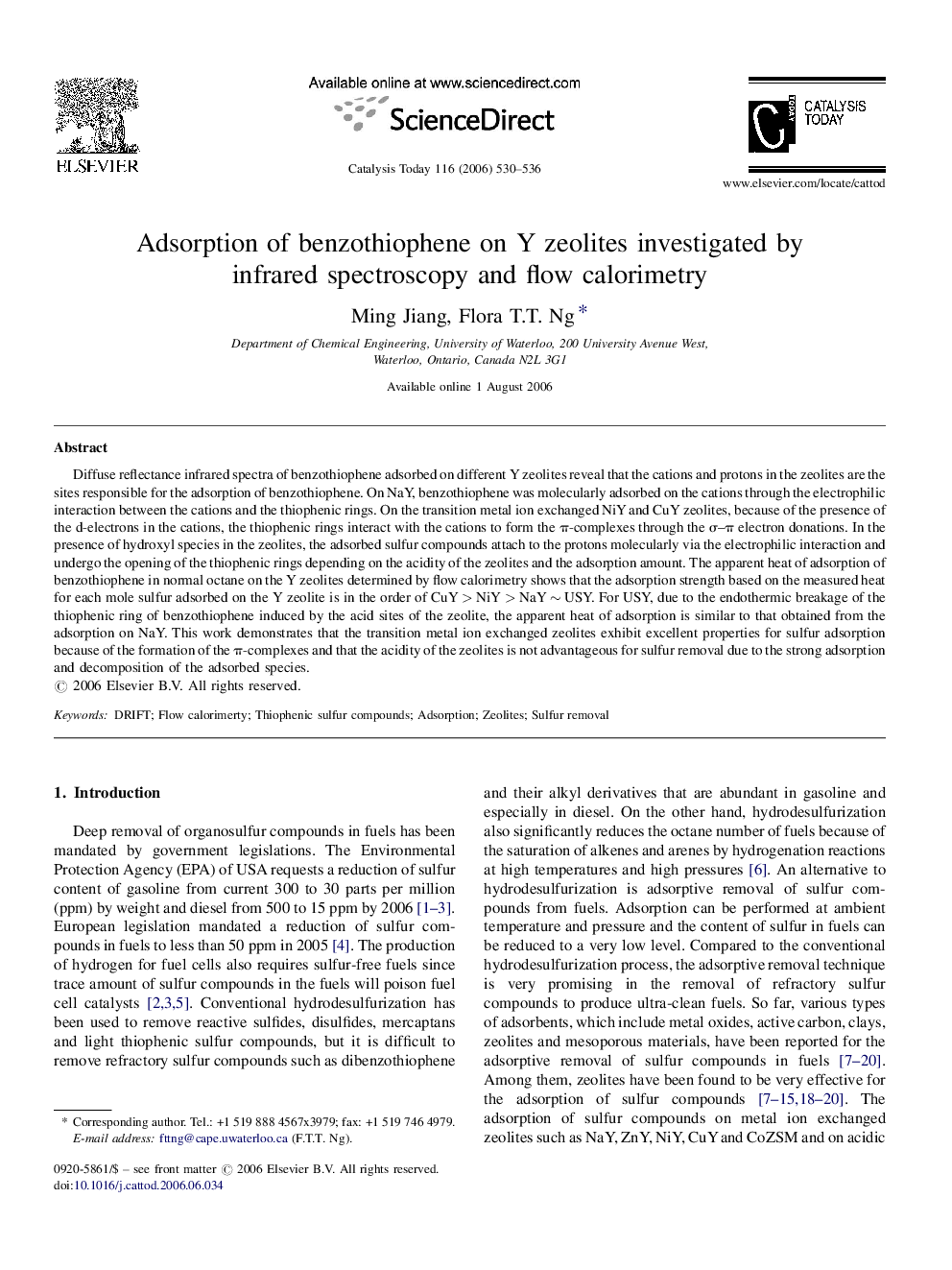| Article ID | Journal | Published Year | Pages | File Type |
|---|---|---|---|---|
| 58433 | Catalysis Today | 2006 | 7 Pages |
Diffuse reflectance infrared spectra of benzothiophene adsorbed on different Y zeolites reveal that the cations and protons in the zeolites are the sites responsible for the adsorption of benzothiophene. On NaY, benzothiophene was molecularly adsorbed on the cations through the electrophilic interaction between the cations and the thiophenic rings. On the transition metal ion exchanged NiY and CuY zeolites, because of the presence of the d-electrons in the cations, the thiophenic rings interact with the cations to form the π-complexes through the σ–π electron donations. In the presence of hydroxyl species in the zeolites, the adsorbed sulfur compounds attach to the protons molecularly via the electrophilic interaction and undergo the opening of the thiophenic rings depending on the acidity of the zeolites and the adsorption amount. The apparent heat of adsorption of benzothiophene in normal octane on the Y zeolites determined by flow calorimetry shows that the adsorption strength based on the measured heat for each mole sulfur adsorbed on the Y zeolite is in the order of CuY > NiY > NaY ∼ USY. For USY, due to the endothermic breakage of the thiophenic ring of benzothiophene induced by the acid sites of the zeolite, the apparent heat of adsorption is similar to that obtained from the adsorption on NaY. This work demonstrates that the transition metal ion exchanged zeolites exhibit excellent properties for sulfur adsorption because of the formation of the π-complexes and that the acidity of the zeolites is not advantageous for sulfur removal due to the strong adsorption and decomposition of the adsorbed species.
